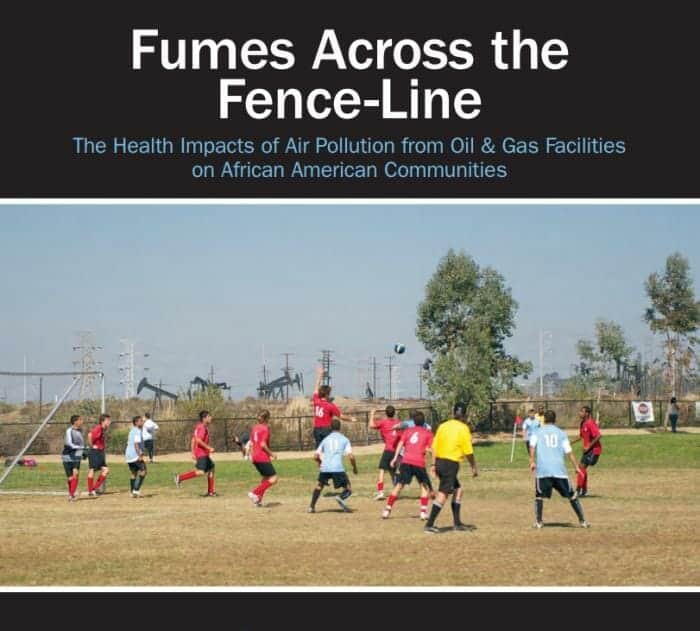A study released in November of 2017 produced by the National Association for the Advancement of Colored People (NAACP) the Clean Air Task Force (CATF) and the National Medical Association (NMA) “Fumes Across the Fence-line” shows for the first time with empirical data that pollution disproportionately affects communities of color. The 36-page study links pollutants emitted by gas or oil facilities near communities of color to high rates of asthma or cancer in those primarily African-American neighborhoods.
Throughout the country the study shows with well-researched diagrams and charts, that 91 counties are home to existing oil and gas facilities or ones that are in development. Over 6.7 million African-Americans, or 14 percent of the nationwide black population, live in those counties. The study shows that the areas at greatest risk are in Texas, Oklahoma and Louisiana. The study is broken down first into a look at natural gas facilities, their proximity to communities of color, the hazards, and then moves into a study of oil refineries, their whereabouts relative to black neighborhoods and more documented health hazards from those facilities. The report also notes that areas surrounding these neighborhoods are also affected by pollutants because of smog, an effect that enables the toxins to travel greater distances, noting that those living within a half mile of active oil and gas wells, compressors, and processing plants are also at risk.
The authors of the study note that protecting environmental measures set in place by the Obama administration is key to protecting communities of color from pollution. Pollution affects all of us. But more than anywhere else, low-income areas are affected. Oil and gas facilities are built in these areas because […]
Full article, with link to the complete report: “Fumes Across the Fence Line” – Documenting the Causes and Effects of Environmental Racism, and Asking: What are the Next Steps?


